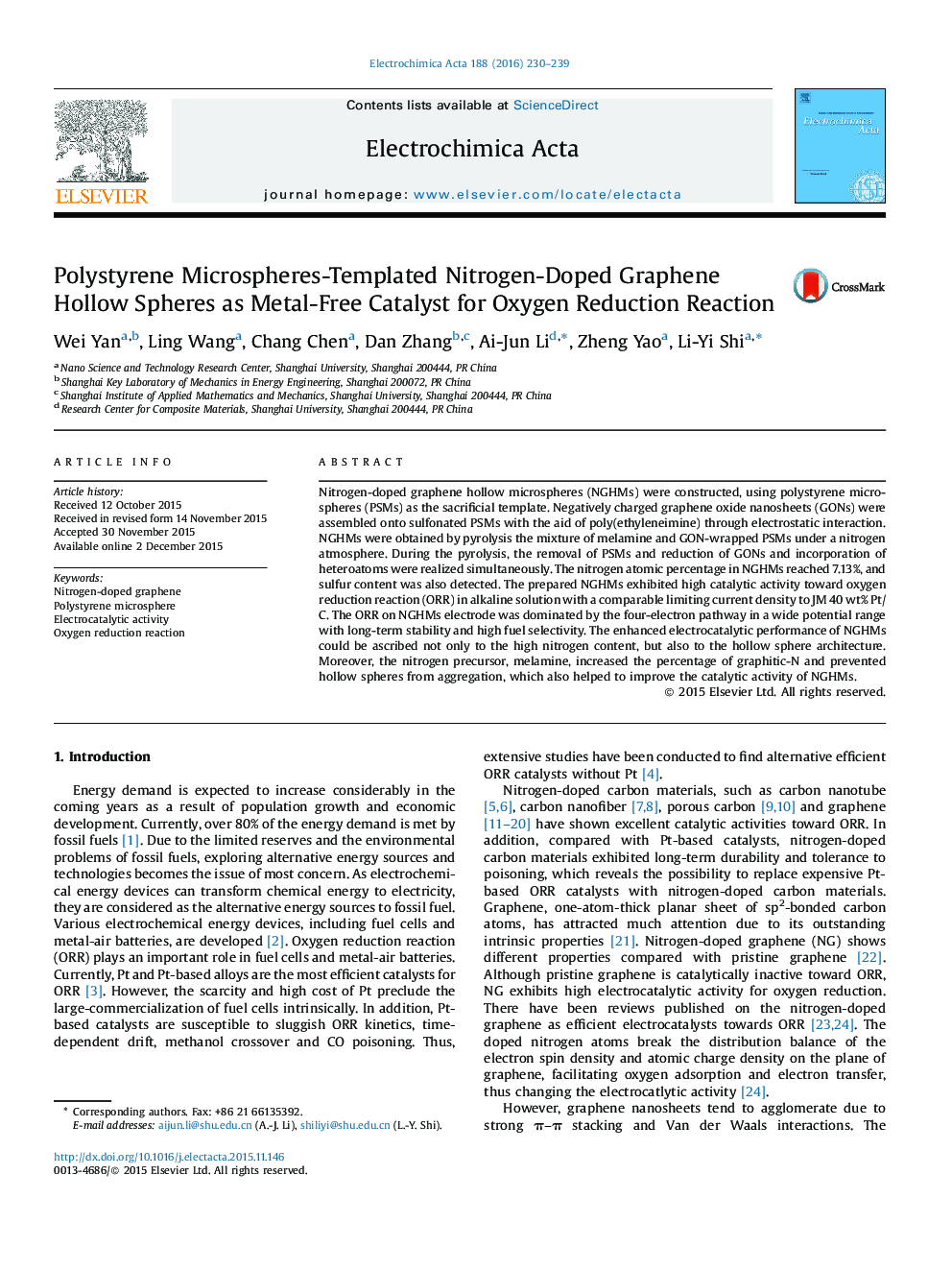| Article ID | Journal | Published Year | Pages | File Type |
|---|---|---|---|---|
| 183351 | Electrochimica Acta | 2016 | 10 Pages |
•NGHMs were constructed using PSMs as template and melamine as nitrogen source.•NGHMs exhibited high catalytic activity towards ORR.•NGHMs displayed a comparable ORR limiting current density to JM 40 wt% Pt/C.•ORR on NGHMs electrode was dominated by 4e− pathway in a wide potential range.
Nitrogen-doped graphene hollow microspheres (NGHMs) were constructed, using polystyrene microspheres (PSMs) as the sacrificial template. Negatively charged graphene oxide nanosheets (GONs) were assembled onto sulfonated PSMs with the aid of poly(ethyleneimine) through electrostatic interaction. NGHMs were obtained by pyrolysis the mixture of melamine and GON-wrapped PSMs under a nitrogen atmosphere. During the pyrolysis, the removal of PSMs and reduction of GONs and incorporation of heteroatoms were realized simultaneously. The nitrogen atomic percentage in NGHMs reached 7.13%, and sulfur content was also detected. The prepared NGHMs exhibited high catalytic activity toward oxygen reduction reaction (ORR) in alkaline solution with a comparable limiting current density to JM 40 wt% Pt/C. The ORR on NGHMs electrode was dominated by the four-electron pathway in a wide potential range with long-term stability and high fuel selectivity. The enhanced electrocatalytic performance of NGHMs could be ascribed not only to the high nitrogen content, but also to the hollow sphere architecture. Moreover, the nitrogen precursor, melamine, increased the percentage of graphitic-N and prevented hollow spheres from aggregation, which also helped to improve the catalytic activity of NGHMs.
Graphical abstractFigure optionsDownload full-size imageDownload as PowerPoint slide
